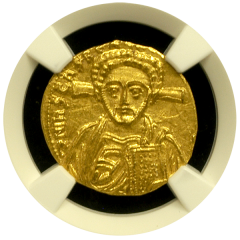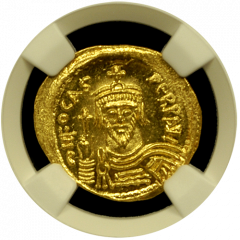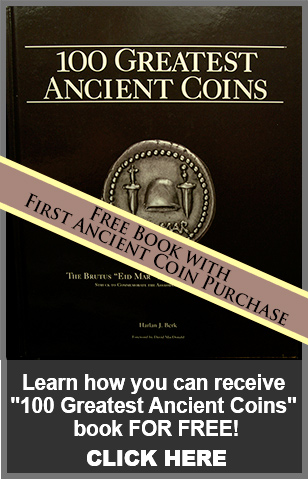Byzantine Coins
The Byzantine Empire, also called the Eastern Roman Empire, was a continuation of the great Roman Empire that gradually fell apart in the 5th century AD. The Eastern Empire remained continued on for a thousand years until in fell to the Ottoman Turks in 1453.
The early Byzantine coins continued using the head of Emperor on the obverse side, but in full-face rather than in profile. The reverse usually depicted some sort of Christian symbol. The type of coins minted during the Eastern Roman Empire were mainly gold solidus' and bronze coins. As time went on, the coins became thinner and wider, which eventually led to late Byzantine gold coins becoming so thin that they could be bent by hand.
- Justinian II Gold Solidus of Christ (2nd Reign) Mint State
Around 1,300 years ago, Emperor Justinian II was the first to adorn a gold coin with an image of Jesus Christ. These coins are highly prized today by many different types of collectors, particularly in mint state condition and perfectly centered like the present example. Coins like this are few and far between in such a high grade. Coin shown is the exact coin you will receive.
**This coin is prominently featured in the 100 Greatest Ancient Coins book.
Learn MoreNow Only $9,175.00 Regular Price $9,600.00Out of stock - Phocas Gold Solidus NGC GEMMS 5x5GEM Mint State Byzantine gold--recently sold to a Texas collector. Learn More$7,194.00Out of stock









